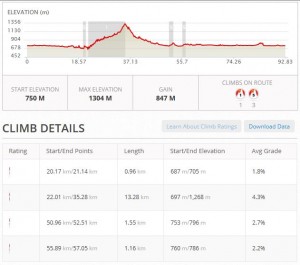Most athletes and sportspeople turn to some additional aids of one sort or another, in their search for improved performance.
Scientific technologies, including equipment, training advances, nutrition and even applied sports psychology, which will usually include focusing and visualisation techniques for improvement, are all used.
Hypnosis in sport has been used under different names, mental or autogenic training being two. Almost all sport has top performers using hypnotic techniques to improve performance. The reason most don’t talk about it is because of the unfounded fear of having ones ‘power’ taken away. This is in fact untrue; all subjects have total control over their minds and bodies.
Suggestion is not something that works only on the unconscious mind; its use can be just as effective at a conscious level. Countless experiments by psychologists and physiologists have proven that the human being can change his or her own beliefs significantly enough to alter the body in some astounding ways. Pain is eased or physical ailments cleared up. Likewise athletic and sporting performance can be increased dramatically in many areas including style correction, technique, speed and strength enhancements
In therapy, hypnosis is used to bypass the critical consciousness to gain access to the powerful subconscious mind. It is then that Psychotherapy is undertaken to release undesirable subconscious behaviour.
In suggestion therapy Post Hypnotic suggestions are used, they act after the therapy is discontinued, usually in the form of positive affirmations to assist in self-esteem, performance enhancement etc.
Remember hypnosis is a state of altered awareness, a state where the consciousness is more focused. The effects of suggestions are greatly increased in these states, what psychologists’ term ‘hyper-suggestibility’. It is this state that athletes and sportspeople, with the help of a hypnotist, can use suggestion to help improve performance, style, posture, confidence etc.
This state is also used when using hypnosis to help speed recovery, remove negative feelings, self-doubt, stress and other hindrances to peak performance.
During visualisation where the athlete is asked to imagine doing something – it requires, at times, tremendous effort to maintain concentration.
Taking this to the next level and introducing a Hypnotist specialising in Sport Hypnosis we could achieve far greater results, as the hypnotist can help the athlete achieve a state of hypnosis and thus a state of higher awareness, thereby enabling far greater concentration and also improving the ability to visualise.
Under hypnosis a person would be able to better ‘see’ themselves performing the tasks with the advantage of the correct expected result being placed into the subconscious where it would form part of the individuals ‘programming’.
It is known that self-doubt is one of the contributors to poor performance on the day of an event – even when everything else is done correctly; personal doubt can foil the best athlete. Imagination is powerful and can override reason. Similarly self doubt or negative thoughts can bring about an injury or cramp just at the crucial moment.
Using Hypnosis in Sport particularly where the Practioner is from a sporting background could have many benefits to athletes at all levels.
Media Coverage Extracted from the article written by Gordon Manning for Successful Coaching: http://www.brianmac.co.uk/articles/scni12a1.htm

